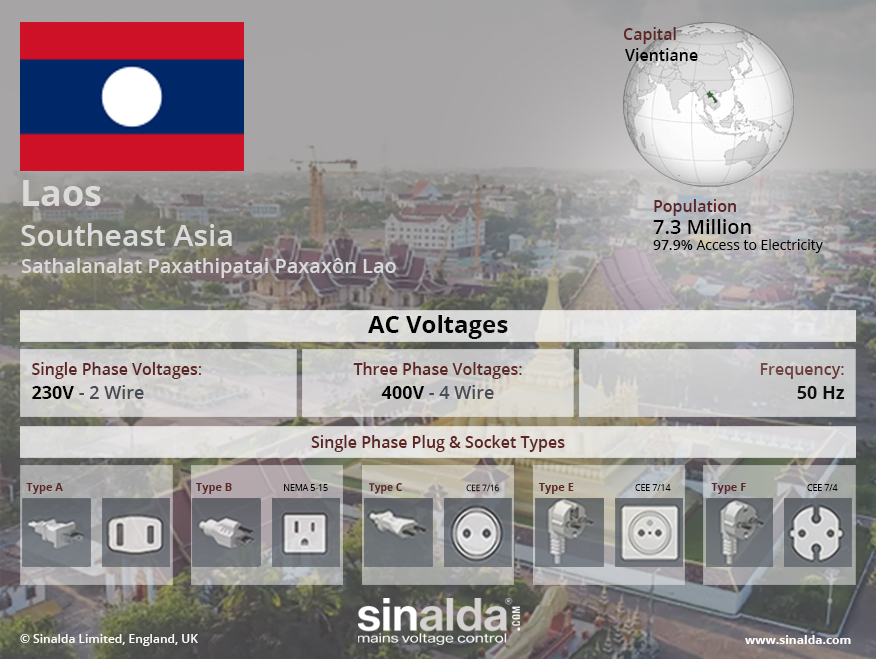Last Updated: 01 January 2023

Copyright 2021 Sinalda. Permission to use this image is granted subject to appropriate credit being given to www.sinalda.com as the source.
Power Quality in Laos
Laos’ electricity supply network has made significant progress in recent years, but it still faces challenges in terms of reliability and accessibility. With a rapidly growing economy and population, the demand for electricity in Laos is increasing, making it essential to ensure that the electricity supply network can meet these growing needs.
Power Sector in Laos
Laos has made significant progress in expanding access to electricity in recent years. In 2019, the electrification rate in Laos was 96%, up from just 16% in 1995. The country primarily relies on hydropower for electricity generation, which accounts for more than 80% of the country’s installed capacity.
Despite this progress, Laos’ electricity supply network faces several challenges. The network is still relatively underdeveloped, with limited transmission and distribution infrastructure in many parts of the country. Additionally, the country’s reliance on hydropower for electricity generation makes the network vulnerable to fluctuations in rainfall, which can impact the availability of electricity.
Reliability of the Network
The reliability of Laos’ electricity supply network varies depending on the location. In urban areas, the network is relatively reliable, but in rural areas, the quality of the network is often lower. Power outages and voltage fluctuations are common in many parts of the country.
To address these challenges, the Lao government has implemented several initiatives to improve the reliability of the electricity supply network. For example, the government has invested in expanding transmission and distribution infrastructure and upgrading existing power plants to improve efficiency and reliability. Additionally, the government has sought to diversify the country’s energy mix by promoting solar and wind power use.
Investing in the Supply Network
Laos’ government and utility companies are investing significantly in the country’s electricity sector to address the network’s challenges. These investments include constructing new power plants, expanding transmission and distribution infrastructure, and adopting new technologies such as smart grids and renewable energy sources.
Laos is also working with neighbouring countries to develop regional power grids, enabling the country to import and export electricity. For example, the Laos-Thailand-Malaysia-Singapore Power Integration Project (LTMS-PIP) is a regional power grid that aims to improve energy security, reduce greenhouse gas emissions, and promote regional economic development.
Conclusion
In conclusion, Laos’ electricity supply network has made significant progress in recent years, but it still faces challenges regarding reliability and accessibility. The Lao government is taking steps to address these challenges, including investing in new generation capacity, transmission and distribution infrastructure, and new technologies. As Laos continues to develop its electricity sector, it will be critical to focus on improving the network’s reliability, expanding access to electricity, and diversifying the energy mix to support sustainable economic growth and development.
Share your Views and Experiences
Every reasonable effort is made to ensure that the information provided above is accurate. No guarantees for the accuracy of the information is made.
So we are able to keep the content updated, and actual on the ground experiences can be shared with others, please feel free to contact us.







